India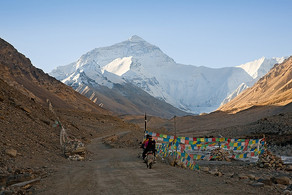 We finished our study of Asia with work on the subcontinent of India. We began by listening to the Diwali story of Lackshmi and the poor washerwomen. Once again, the students worked in groups, and gave presentations to the whole class. Our study groups worked on mapping, Hinduism, yoga, and the Dalai Lama. They learned about geography, myth, and culture as well as practicing research, organizing ideas, and public speaking. We also watched a short clip from BBC's Planet Earth with stunning images from the Himalayan mountains. Australia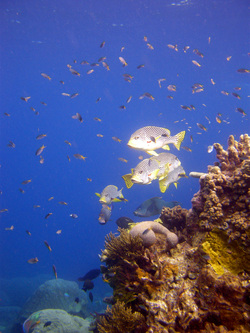 In the long ago Dreamtime, when the world was being made, there was no sun in the sky.... So began the aboriginal folktale, entitled "Emu and Eagle's Great Quarrel," that we read to introduce our study of Australia last week. After listening to the story, we talked about its wonderful descriptive language, and the foreshadowing employed in the introduction. Then, with a timer set for 5 minutes of silence, the students began their stories. Please encourage your student to finish and bring in his or her story to share with the class. Our children are growing in confidence as researchers, writers, teachers, and public speakers. After our writing work, we moved on to research. After choosing from a list of subjects, including Australian animals, the Great Barrier Reef, Uluru, and mapping, students selected appropriate books, developed a presentation, and shared it with the class. This week I will be asking them to commit to a subject for their final class presentations. Many of them already have good ideas! On Monday, we will study South America. Please send in any interesting books you may have about the fascinating animals and geography of that continent. Concluding our Forensics Unit 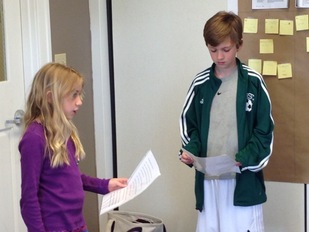 We started off class this week with each group or student presenting their theory as to what occurred the day of the crime. All of the theories included Kendra and Vera, but not always as willing participants. Felix was portrayed as having gone crazy based on what was in his cola to a fully aware participant of staging his own death. Certain details were linked in various theories that I had never even thought of! Very thoughtful ending to a very mysterious unit! Exploring Local Ecology 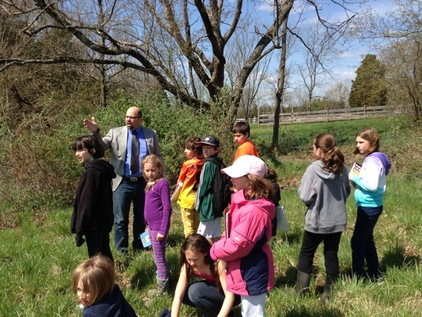 Next we moved onto our Ecology Unit. Pastor Matt joined us in our walk across the street as he had a spot he highly recommended. He is very knowledgeable about the area and the natural surroundings. What a beautiful area we get to explore! He led us to a small creek area surrounded by trees and bushes. Since we only had a small amount of time I had the students spread out and find a place to sit quietly with their notebooks for five minutes. After making sure groups of students moved far enough away from each other to discourage talking, they wrote or drew their first impressions of the site. I found it very interesting to look around during this time. All the students were engaged with their notebook, pausing to look around as they wrote. It reminded me how they don’t often get a chance to sit quietly in nature. At that moment I decided to make sure that this is a part of our weekly study.  Please make sure that your child has a pair of shoes that can get wet and muddy. They should also wear socks and long pants, along with a jacket and hat. Please apply sunscreen beforehand and do a tick check at home after Mosaic. Some students were getting scratched up on feet and ankles that had no socks or were freezing because they didn’t have a jacket. I felt badly, but I can’t change the plan because some students aren’t prepared. Continue to bring notebooks as this is where their observations and studies will be recorded. Looking forward to spending a good amount of time outside enjoying the weather! The Intersection of Euclid & Eratosthenes
In order to understand how the intersection of Euclid and Eratosthenes led to the first estimate of the Earth's circumference (with remarkable accuracy!), we looked in detail at Euclid's Proposition 29 which states that: Together, we broke down the statement to identify each part and students restated the definition using the names of lines and angles from an example diagram to make sure the statement made sense to them before we moved forward. Line a falling on line b and line c makes:
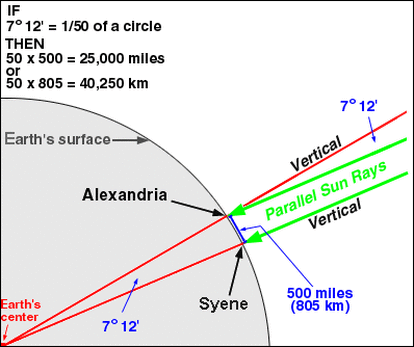 Using our understanding of Euclid's Proposition 29, we were then able to see how Eratosthenes applied this principle (and excellent critical thinking skills) to obtain his famous estimate of Earth's circumference. Eratosthenes knew that in Syene, which is located in southern Egypt, the Sun at noon on the summer solstice shines down to the bottom of a well. He also knew that at noon on this, the longest day of the year, objects do not cast shadows. However, in Alexandria, which is farther north, at noon on the summer solstice, he noticed that objects do cast shadows. Eratosthenes used this simple observation to calculate the circumference of the Earth. He assumed that 1) the Sun's rays strike the Earth in parallel lines, and 2) that the Earth is round (recall, not everyone at this time and for many years to come believed in a round Earth!). The approach he used was to measure the distance between Syene and Alexandria based on the number of steps someone took to walk between the two cities. He then measured the shadow cast by a stick placed vertically in the ground at Alexandria at noon on the summer solstice. He measured the angle from the stick to the shadow and found it be 7.5 degrees, or approximately one-fiftieth of a circle. Since Eratosthenes was familiar with Euclid's work and The Elements, he knew that the angle of the shadow cast by the pole is equal to the angle at the Earth's center between Syene and Alexandria. By multiplying the distance from Syene to Alexandria times 50, Eratosthenes was able to calculate the circumference of the Earth with amazing accuracy! At that time, distance was measured in stadia. The distance between the two cities was approximated to be 5,000 stadia which is equivalent to about 800 km, or 500 miles. Eratosthenes estimated the circumference of Earth to be 25,000 miles - that's within 2% of our current best estimates! Final Projects and Homework During the last 15 minutes of class students worked independently on a review/test which covers concepts from Chapters 14-18 in the textbook. We will go over the answers together in class next week.
I met with each student individually to discuss their ideas for a final science fair project. It looks like we will have a great variety of topics covered and I'm looking forward to seeing where the students take their ideas and what they will create for final presentations! For homework this week, I would like students to prepare a one-paragraph description of their project and the approach they plan to take - you will need to hand these in to me on Monday. This will help ensure that everyone has clearly thought out and can articulate their project. Please take time this week to think through what you will research, build, and present (visually and orally) to the class. We have only a few short weeks left in the semester and everyone should have a definite project idea and be moving forward. Any questions or concerns, I am here to help you, so please don't hesitate to contact me. Additionally, students should read Chapters 20 and 21 in the text. See you next week! Happy Birthday, Will! - April 23rd, 1564 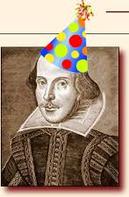 What a fun and creative class this week due to all the unique and original projects, skits, and readings! Bravo…Brava! We got off to a great start with an awesome "rap" about Hamlet that got the whole class feeling the beat! Then, on to some creative power point presentations based on The Ghost of Hamlet's Father, Hamlet's close friend Horatio, and Hamlet's mother, Gertrude, plus, a slideshow on Hamlet's evil Uncle Claudius. We also heard some lovely poems about Ophelia, Hamlet's girlfriend, enjoyed seeing a poster of the crazier side of Hamlet, as well as a cleverly drawn Facebook page on Gertrude with a current message included about gender roles of those times and how women were perceived in the 1600's (I love this class!). We engaged in a few discussions on each project and why the students chose their character and how their research may have shifted their views on the play or character. Thank you all for sharing your projects and your heart and soul with the class. You were amazing.
Until then, lots more practice and more HOMEWORK  Students were given a Part II handout to the Shakespearean Web Quest assignment from early April. They are to gather information from the several websites given and find out more about the mysterious William Shakespeare. Go to each site where instructed, and read the information given in that site. Then, answer the questions asked. Note* You may need to go beyond the first page of the site to find the information! We will share and discuss your findings in class next Monday. Also, please note, Question #9 may require a software download -- therefore, YOU MAY SKIP #9! Treasure hunt alert! *If you find an interesting nugget of information about Will outside of your research, write it down and bring it with you. Let's see who finds the most interesting tidbit. Have a great week everybody! More with Machines and the Laws of Physics 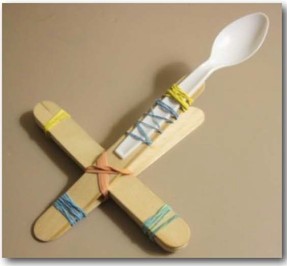 We began class this week with a review of the basic physics involved with the design and use of the catapults students built as part of their homework assignment. Students should be able to clearly articulate the concepts of force, work, kinetic and potential energy, and Newton's three laws of motion, as they relate to this simple machine, known as a lever. We discussed the effectiveness of the simple catapult design and ways students had found to increase the distance they could launch a mini-marshmallow using their device. Most of the students determined that increasing the length of the effort arm (by moving the spoon and/or the location of the fulcrum) would increase the distance and thus the work performed by the catapult. And a special thank you to Kate, who brought in a more complex catapult design she had created for another class and demonstrated it's ability to launch a marshmallow clear across the classroom!
Homework and Science Fair Projects For homework this week, students should read Chapters 18 and 19. Next class we will look at the amazing work of Eratosthenes and his estimation of the Earth's circumference.
I have also asked that they spend time thinking about and deciding upon a topic for their end-of-semester individual projects. I am asking each student to prepare a 'science fair' type project to be presented at our last class (5/20). Students should look through the many diverse topics covered in the text which relate to the development of science from ancient through medieval times. I strongly encourage students to choose a topic that ties in with their own personal interests, whether it be literature, art, architecture, computer science, math theory, languages, or the accomplishments of a specific scientist/philosopher. Students may research and prepare a report, create an experiment, build a model to illustrate a scientific principle, or any other approach they desire. Be creative and have fun! We will enjoy learning about each others topics on our last day of class. Please come to class with one or more ideas for your project so that I may approve the idea before you move forward. 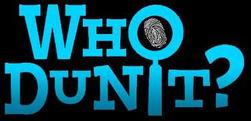 Well, the jury has deliberated and the results are unanimous. After much discussion and debate the class has agreed that Kendra and Vera had something to do with Felix’s murder. Seven out of eleven of the students also think that Felix isn’t really dead and somehow got Kendra and Vera to join in with him to stage his own death! BUT, we have a problem. The students had a lot of trouble getting evidence to back up their theory. Many could generally say why they came up with their theory, but kept getting confused when asked questions about the other evidence. SO, we actually HAVE HOMEWORK this week. I think what the students really needed was to spend some time putting the pieces of the puzzle together. I told them what they needed to do was write a story about what happened that day, using as much evidence as possible. I told them there would still be questions left unanswered (which is very common in real life), but for the most part our most important pieces of evidence should be included in their story. I offered them any notes or worksheets we used in class to take home in order to help them. Just in case some students still need reminders, here is a list of the tests we conducted in class. (All of them are familiar with the results.)
Gearing up for Ecology After we share our theories at the beginning of class next week we will be taking a walk outside to our area of study for our Ecology Unit. If there is time the students will be making a map of the area. Here is a list of things that students should have:
To Mime or not to Mime!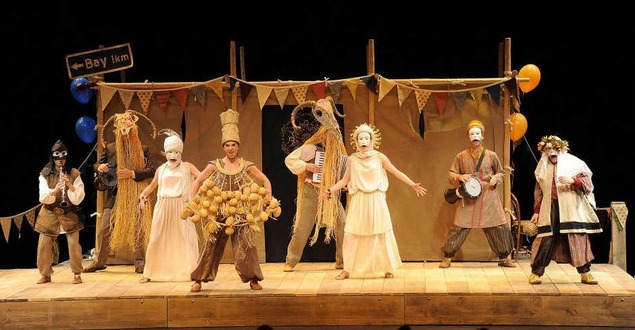 The Elizabethan "Dumbshow" or what we now call "pantomime" is how we began our Reader's Theatre class this week. After a few failed attempts of watching a short video on pantomime (the internet was not cooperating) we got to see a few bits and pieces on the basic premise of pantomime. Here is what we tried to watch in its full uninterrupted version. After understanding pantomime's definition we moved on to a short exercise to put it all to work. The kids had fun with this as they stood in a circle and pantomimed together passing a "heavy" ball to each other or passing their facial expression (happy, sad, surprised, scared, etc.) to a classmate and in turn passed it down the line. They were then asked to act out a short skit in pantomime making sure they applied a basic story outline of a beginning, middle and end to their skit. The class had to guess what the scene was about. There was a lot of enthusiasm around telling a story through motion and expression. The trick for them was to do it without sounds or voice. It was great to see the kids volunteering to try it out solo! Why were we pantomiming in a "reader's" theatre class you ask? "The Play's the Thing" (Hamlet Act III Scene II). The most famous pantomime in English Literature occurs in Shakespeare's Hamlet in the "play within a play" staged by Hamlet who wishes to witness his Uncle King Claudius's reaction in hopes it will uncover his guilt over the murder of Hamlet's father. However, this type of pantomime stems back to Elizabethan times when it was called "Dumbshow." The shows were "dumb" in a sense because there was no speaking as actors acted out the scene to flute music. Naturally, and thankfully over time, the name was taken over by "pantomime" whose roots are steeped in Ancient Greece. Here is a version of Hamlet's "play within a play" from Act III Scene II that we also tried to view (when the internet was in our favor). The "dumbshow" doesn't get underway until the time marker 2:00 on your YouTube screen. 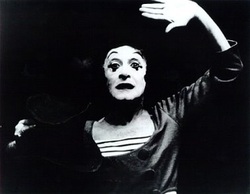 The students were then split into two groups and given a handout with six scene choices from Hamlet they could pick from to create their own dumbshow skit. Not to worry! We won't be smearing our faces with white clown makeup (even though that would be kinda fun!), but students are asked to select music that they would like to use during their skit and any props they want to incorporate for next week's showing. There were some terrific directors emerging as the groups worked on their staging and acting. Finally, we ended class with our script from Hamlet. Everyone has seemed to relax more into their parts and after a little coaxing become more animated in their characters. In this reading, we incorporated a seated staged reading where the actors sit in a row on chairs and lift their heads when it is their turn to read their part. Next week, we will integrate some more gestures and movement into our reading. This will round out the completion of our exploration into the life of Hamlet after which we will move on to our final Shakespearean play for the semester -- A Midsummer Night's Dream. The Homework's the Thing!For homework, students are asked to complete their Hamlet character study and collections to present to the class next week, 4/22. Remember there is room for lots of creativity here…music, drawings, photos, poems, fabrics, articles, books…you name it. Be sure you are able to explain how your collection fits in with your interpretation of the character you chose. *NOTE: If students are showing their presentations on computers, I have a Mac laptop they can use if their work is compatible with Mac. They will also be performing their Hamlet dumbshow scenes for the class. Make sure music has been selected and brought with you along with any props that were discussed to be used. I have a little "home" speaker they can plug into for their music. Reminder: Be sure students bring their Hamlet scripts with them to class -- if they've lost them, let me know, so I can email a copy or bring one with me to class. Have a great week! 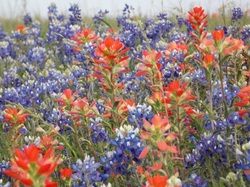 Bluebonnets and Indian Paintbrush Bluebonnets and Indian Paintbrush The Harris Family sends its best to all Mosaic students and families! The Texas wildflowers are in bloom and are quite the sight! We think of you all often. Have a great rest-of-semester! -- Mrs. H Final Testing and Solving the Crime 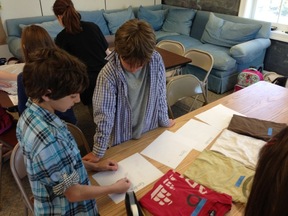 Our testing has finally concluded and now the hard work begins. We began class by organizing our clue board yet again, based on our findings from our tests last week. Not only did we discuss the results of the tests, but what those results might mean for our crime scenario. What suspects do our results point to and how crucial is that information to solving this crime? Is every piece of evidence important?
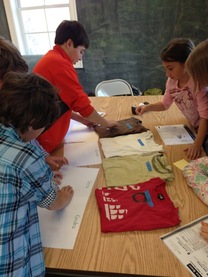 We also conducted tape lift samples from shirts each suspect was wearing at the time of the crime, comparing what we found with samples of dog hair, human hair, threads, yarn, and grass. Ask your child what their results were and what that might tell us about the crime. Homework - What is your Theory? For once this class has homework! This week students are to think back on the tests that were conducted and put together some sort of scenario of what could have happened to our victim, Felix. I encouraged them to look at the evidence instead of making inferences. Their theory must have some evidence to back it up. Some theories overheard in class were extremely creative, but not evidence-based. If your child wants to write out what they think could have happened they are welcome to, but it’s not necessary. In class on Monday they will be working in their teams to discuss their theories and decide on one to present to the class. It’s best to come with an idea of what they think might have happened so there can be a starting point for the discussion. Have your child explain their theory to you. Ask them what evidence pointed them in this direction. By the end of class on Monday we should have this crime solved! Our Next Unit - Ecology!  Looking ahead, our next unit will be focusing on ecology. How I wish we could have started it on Monday when it was such a beautiful day! I wanted to give you a heads up that during this unit we will be spending a lot of time outdoors. Please make sure your children have a hat to protect them from the sun, along with sunscreen. Also, we will be walking through brush so it’s a good idea for them to wear clothes that can get dirty, including boots for walking through wet areas and long pants to protect from ticks and scratches. They can bring the boots with them if they want to put them on when we’re in the field and change back when we’re done. It’s possible things could get muddy, depending on the weather. Looking forward to enjoying some of this warm weather while we learn about the world right outside our door! Putting the Pieces Together 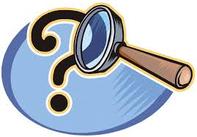 We are getting closer to putting together the pieces of this mysterious puzzle! Our class began with a discussion of our test results from our last class period. Some disagreement arose over a couple of the results, which we will review in our next class session. Other tests definitively pointed to certain suspects. So, we were left with the question of how important a certain piece of evidence could be. We re-arranged a few things on our clue board and began 3 more tests. DNA was found from hair in a comb at the scene. The lab sent us the results, which we compared to the DNA of our four suspects. We also tested the water found in an ice cube tray to see how it compared to regular tap water. Finally, a piece of tagboard was found at the scene with an imprint of a note on it. Using silly putty we pressed it against the indents of the letters and held it up to a mirror in order to read what was written. This proved to be much harder than expected, so each team shared results as they went along in order to piece the words together into a coherent message. In class on Monday (4/8) we will conduct two final tests and share our results as a class, writing our final results on our crime scene map. Next, we’ll work in groups to put together some kind of a story line that coordinates with our evidence. This is where students will discover that investigating a crime has lots of loose ends and every piece of evidence might not be essential. Picking and choosing what to focus on will be critical to our success as we move closer to solving this crime. On to China!The Silk Road took merchants from Europe to China, and on Monday we made the same journey in our Maps & Stories class. We learned about China and made connections with the places we have learned about previously.
The first Chinese myth we listened to was "The Heavenly Archer." Nine fire breathing birds are causing trouble, and Sheng shoots them to bring peace and safety to the earth. He is rewarded with immortality. After listening to the story, students chose to respond to one of two writing prompts. Your child may have chosen to write an alternate solution to the problem of the nine fire breathing birds, or answer the question, "Who can resist the idea of eternal life?" Please have them finish their response this week. We will review them in class next week. After listening and writing, we broke up into six teams, each responsible for researching and presenting an important feature of Chinese history or culture. The teams were each assigned one of the following: yurts, the abacus, animals of China, Marco Polo, a Chinese myth, or the Silk Road. After spending 30 minutes researching, writing, or building in our teams, we gathered together so that each team could share their work with the class. The students did a wonderful job! As I told the students in class, the individual presentations can be similar to the presentations they did this week. They may choose to present anything related to our studies. It may be an original folktale, a retelling of a favorite story, a project, or a lesson about geography or culture. The presentations can be 5-10 minutes in length and can be conducted anytime this spring, as long as we plan in advance. Next week we will review the writing assignments and continue our study of Asia, focusing on India. Have a great week! |
Categories
All
Archives
May 2016
|

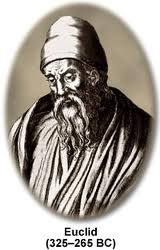
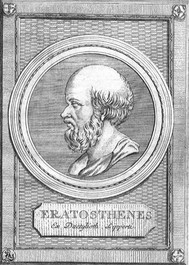
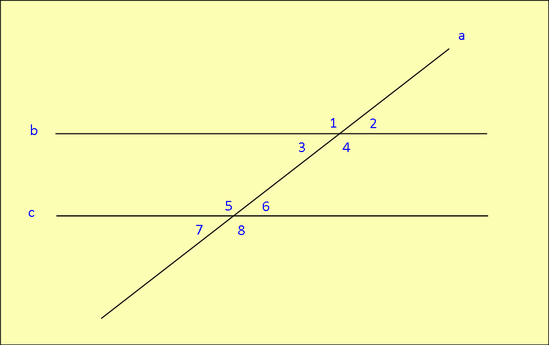
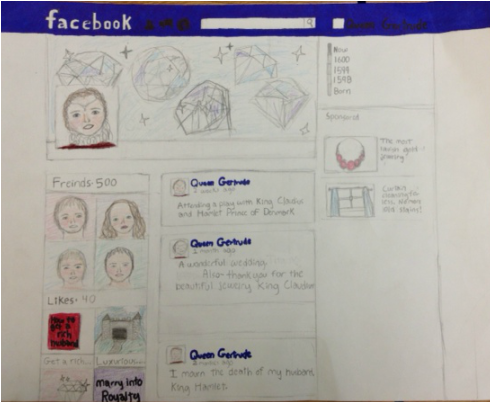
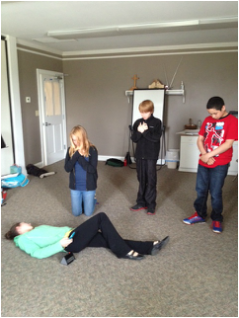
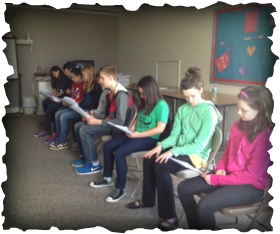
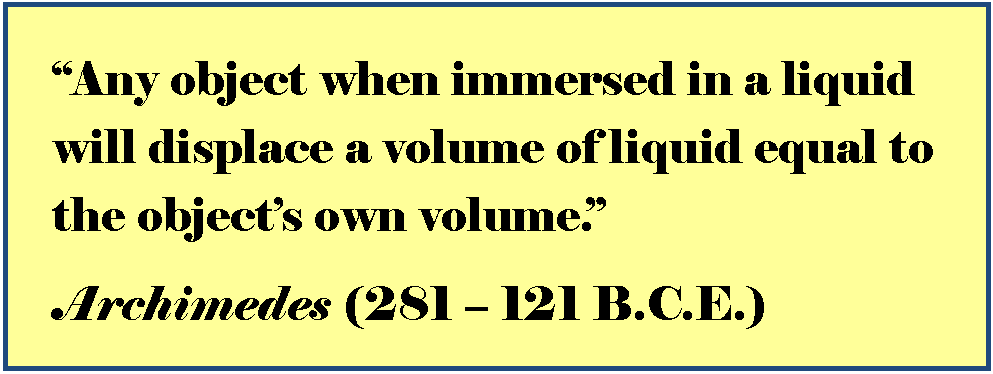

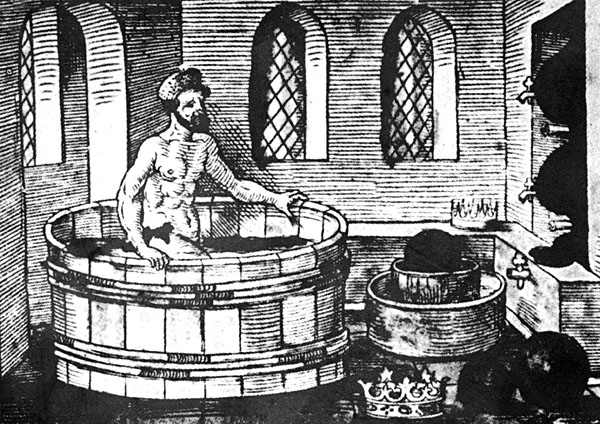
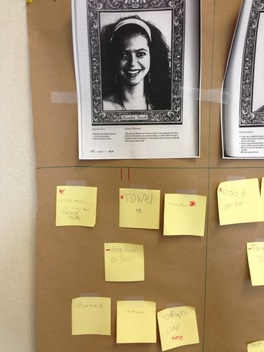
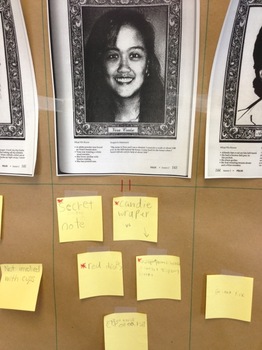
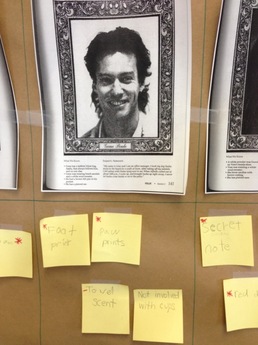
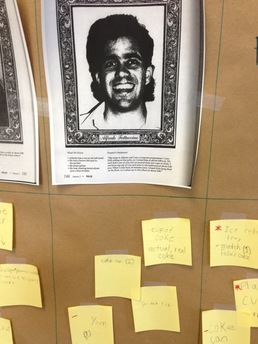
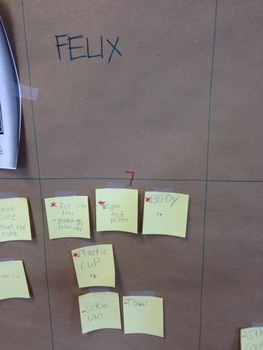
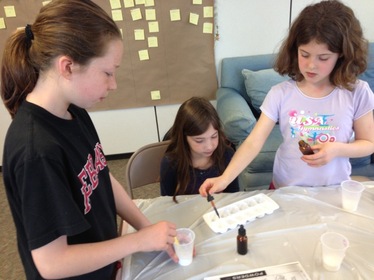

 RSS Feed
RSS Feed